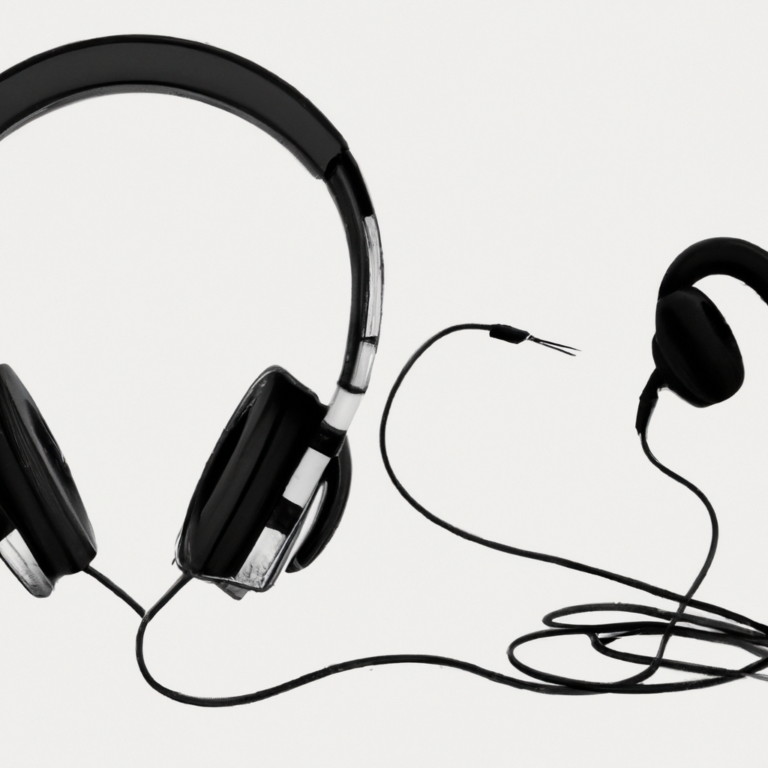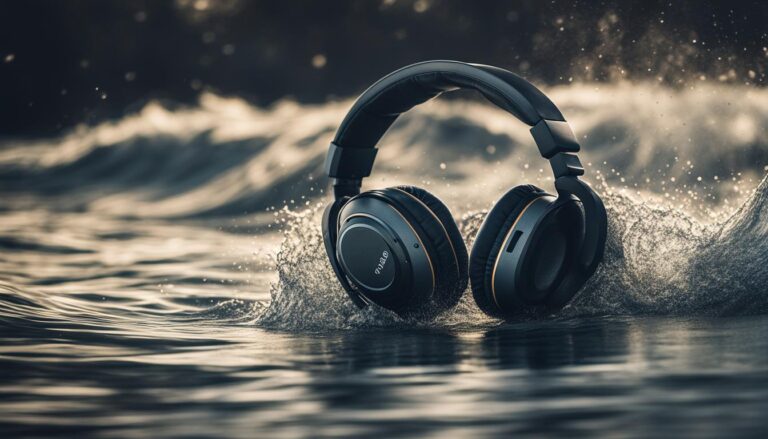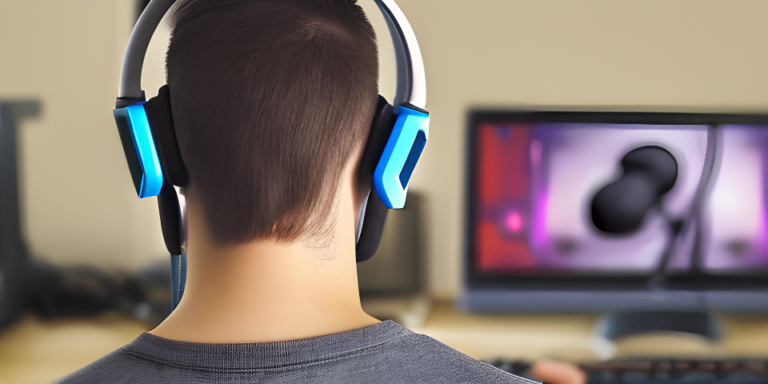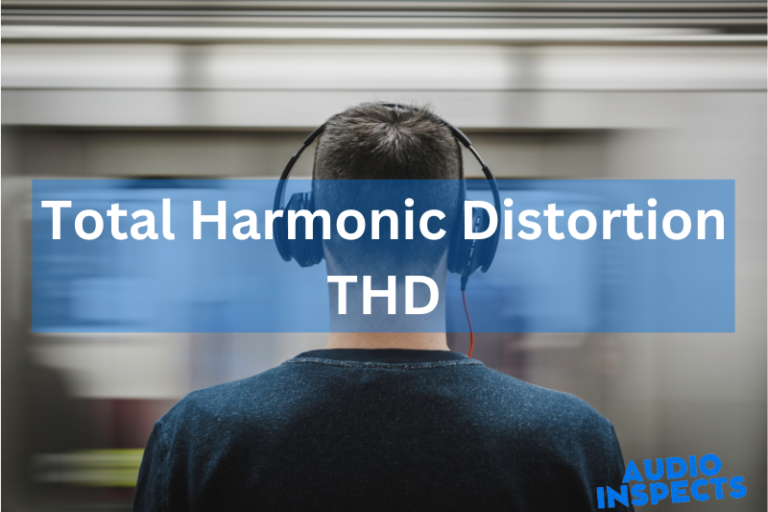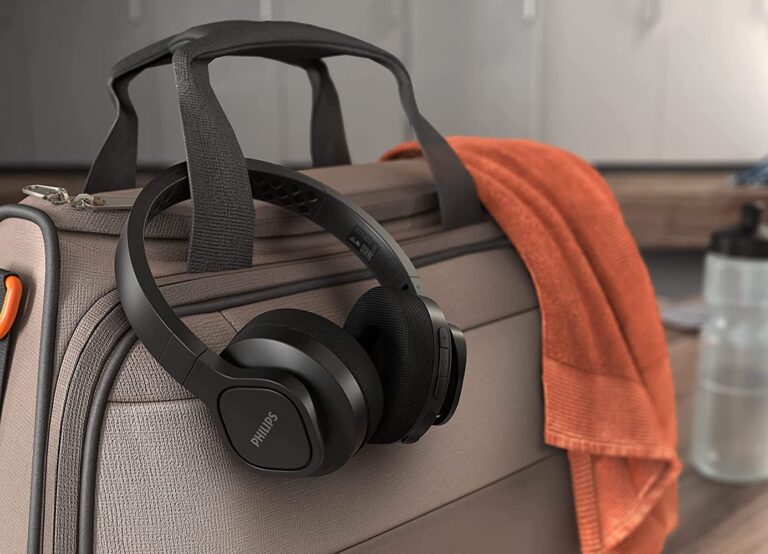Headphone Sensitivity: The Key to High-Quality Audio
We conduct independent testing and research of products, so you can make an informed decision before making a purchase. And when you do decide to make a purchase through our links, please note that we may earn a commission, but this does not affect the honesty of our reviews.
When it comes to audio quality, many people focus on factors such as frequency response and driver size. However, one aspect that is often overlooked but just as important is headphone sensitivity.
In this article, we will explore what headphone sensitivity is, why it matters in audio quality, and how to choose the right headphones based on their sensitivity levels.
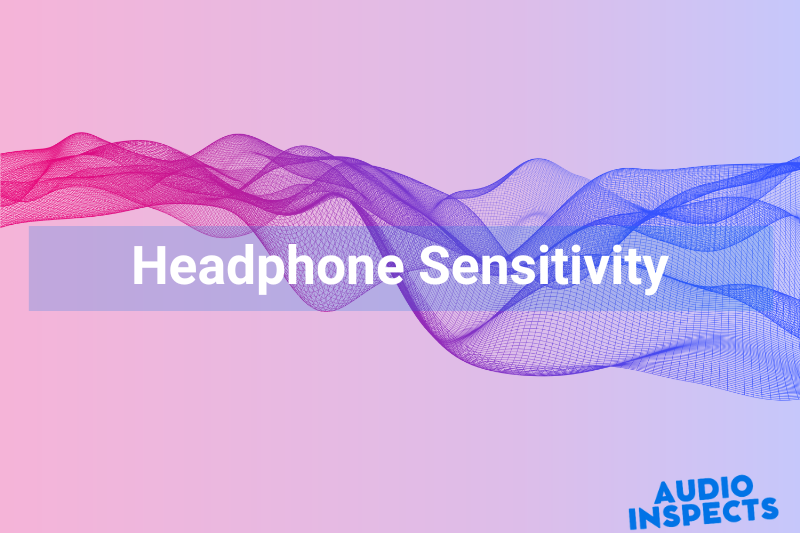
Definition of Headphone Sensitivity
Headphone sensitivity refers to the efficiency with which a pair of headphones converts an electrical signal into sound. It measures how loud a pair of headphones can get with a given amount of power input.
Headphone sensitivity is usually measured in decibels (dB) per milliwatt (mW) of power. The higher the dB/mW rating, the more sensitive the headphones are.
To put it simply, high-sensitivity headphones require less power to produce louder sounds than low-sensitivity ones. For instance, if you have two pairs of headphones rated at 90 dB/mW and 100 dB/mW respectively, and plug them into the same device at the same volume level, the latter will be noticeably louder since it requires less power input for equivalent volume levels.
The Importance of Headphone Sensitivity in Audio Quality
Headphone sensitivity plays a critical role in determining audio quality for several reasons:
Accuracy
Sensitive headphones reproduce sounds more accurately because they require less amplification from external sources. They give you an accurate representation of how music was mixed without any unwanted distortion or coloration caused by over-amplification.
Noise Floor
The noise floor is the level of background noise that your headphones produce even when there is no music playing. Higher sensitivity means that the noise floor is lower, resulting in a cleaner and crisper sound.
Compatibility
High-sensitivity headphones are compatible with a wider range of devices, including portable music players and smartphones, which may not have powerful built-in amplifiers.
Battery Life
Battery-powered devices such as wireless headphones can benefit from higher sensitivity because they require less power to produce the same volume levels. This translates into longer battery life and fewer recharges.
Ease of Use
Sensitive headphones are easier to use because they don’t require you to turn up the volume as much to get the desired sound level. This reduces listening fatigue and protects your hearing in the long run.
Headphone sensitivity is a critical factor that should not be overlooked when choosing headphones for audio quality. By understanding what it is and why it matters, you can make an informed decision and enjoy your music at its best.
Understanding Headphone Sensitivity
Explanation of Decibels (dB)
Before diving into headphone sensitivity, it is important to understand what decibels (dB) are and how they relate to sound. Decibels are units used to measure the intensity or loudness of sound.
In simpler terms, it is a measure of how much pressure sound waves create in the air. The human ear can hear sounds ranging from 0 dB (absolute silence) to 120 dB (extremely loud).
However, prolonged exposure to sounds above 85 dB can lead to hearing damage over time. This is why it is important to pay attention to the volume levels when using headphones.
How Sensitivity Affects Volume and Sound Quality
Headphone sensitivity refers to how efficiently the headphones convert electrical signals into sound. It determines how loud a pair of headphones can get with a given amount of power. The higher the sensitivity rating, the louder the headphones will be with less power.
Sensitivity is measured in decibels per milliwatt (dB/mW). For example, a pair of headphones with a sensitivity rating of 100 dB/mW will produce 100 decibels of sound with just one milliwatt of power.
However, high sensitivity does not always mean better quality. In fact, higher sensitivity can sometimes result in poorer audio quality due to distortion at high volumes.
As such, finding the right balance between volume and quality is crucial when selecting headphones. Additionally, sensitivity can vary depending on impedance and frequency response – two factors that also impact sound quality.
Impedance measures how much electrical resistance there is in the circuitry of the headphones while frequency response refers to how well they reproduce different frequencies across the audible spectrum.
Overall, understanding headphone sensitivity and its relationship with volume and sound quality can help users make informed decisions when selecting headphones that meet their needs.
Types of Headphone Sensitivity
Not all headphones are created equal, and this is especially true when it comes to sensitivity. The sensitivity of a pair of headphones refers to the amount of sound they can produce in response to a given amount of power. In general, higher sensitivity means that a pair of headphones can produce more volume, although there are other factors at play as well.
Low Sensitivity: < 90 dB/mW
Headphones with low sensitivity are typically less efficient than other types. They require more power to produce the same volume level as headphones with higher sensitivity. This makes them less suitable for use with portable devices such as smartphones and MP3 players, which have limited power output capabilities.
However, there are some advantages to using low-sensitivity headphones. They often provide better sound quality than their high-sensitivity counterparts because they tend to have larger drivers that can produce more accurate sound.
In addition, low-sensitivity headphones are often less expensive than their high-end counterparts. This makes them an attractive option for people who want good-quality sound but don’t want to break the bank.
Medium Sensitivity: 90 – 100 dB/mW
Headphones with medium sensitivity fall in between low-sensitivity and high-sensitivity models in terms of efficiency. They require moderate amounts of power but still offer good sound quality.
For most listeners, medium-sensitivity headphones strike an ideal balance between price and performance. They’re efficient enough to use with portable devices but also provide good sound quality that will satisfy most music lovers.
High Sensitivity: > 100 dB/mW
Headphones with high sensitivity are highly efficient and require very little power to produce loud volumes. They’re ideal for use with portable devices, as they can play loudly without draining the battery too quickly.
However, high-sensitivity headphones also have some downsides. They tend to be more expensive than low- or medium-sensitivity models, and they may not offer the same level of sound quality.
In addition, high-sensitivity headphones can be overly sensitive to noise and distortion. This means that they may produce unwanted hissing or buzzing sounds if they’re not used with a good-quality amplifier.
Choosing the Right Sensitivity for Your Needs
When choosing a pair of headphones, sensitivity is just one factor among many to consider. You’ll also want to think about other factors such as impedance, frequency response, and driver size before making your final decision.
Ultimately, the right sensitivity level will depend on your listening habits and preferences. If you’re looking for a set of headphones that you can take with you on the go and use with your smartphone or MP3 player, then medium- or high-sensitivity models are probably your best bet.
On the other hand, if you’re an audiophile who demands the highest levels of sound quality possible then a low-sensitivity model might be more suitable. Whatever your needs may be, there’s a pair of headphones out there that will suit them perfectly!
Factors Affecting Headphone Sensitivity
Impedance: The Hidden Variable
One of the main factors affecting headphone sensitivity is impedance. Impedance is the measure of opposition to alternating current in an electrical circuit, and a higher impedance means that more voltage is required to produce a given level of power.
This means that high-impedance headphones require more power to produce the same volume as low-impedance headphones. In general, higher impedances are more common in professional audio equipment like studio monitors, whereas consumer headphones tend to have lower impedances.
However, it’s important to note that just because a headphone has a high impedance doesn’t necessarily mean it will sound better or produce better sound quality than one with a lower impedance. In fact, many high-impedance headphones require dedicated amplifiers to get the best performance.
Frequency Response: Consistency Is Key
Another factor that affects headphone sensitivity is frequency response. Frequency response refers to how well a pair of headphones reproduces sounds across different frequencies – from low bass notes to high treble tones. Headphones with flat frequency responses are ideal for recording and mixing audio because they accurately reproduce sound across all frequencies without emphasizing any particular range at the expense of others.
However, some listeners may prefer headphones with non-flat frequency responses because they add coloration or character to certain types of music. In general, headphones with wider frequency responses tend to be more sensitive than those with narrower ones because they can reproduce sounds at both ends of the spectrum.
Driver Size: The Bigger The Better?
The size and construction of a headphone’s driver can also affect its sensitivity. The driver is responsible for converting electrical signals into sound waves and producing the audio you hear through your headphones.
Larger drivers generally have greater surface area and can move more air, which can lead to better bass response and overall sound quality. However, bigger drivers also require more power to move, so they may not be as sensitive as smaller ones.
The type of driver can also affect sensitivity. Dynamic drivers are the most common type of headphone driver and tend to have lower sensitivity than other types like planar magnetic or electrostatic drivers.
Other Factors
Other factors that can affect headphone sensitivity include the material used for the diaphragm, the headphone’s enclosure design, and even the shape of your ear cups. However, impedance, frequency response, and driver size are generally considered the most important factors when it comes to determining headphone sensitivity and its impact on audio quality.
When choosing headphones, it’s important to consider these various factors that contribute to sensitivity for optimal audio performance. For example, if you’re using low-impedance headphones with a device that has a high output impedance (like some older portable music players), you may not be getting the best possible sound quality.
Similarly, if you’re interested in mixing or recording music professionally, you’ll want headphones with a flat frequency response for accurate monitoring. Overall, understanding how these factors impact a headphone’s sensitivity will allow you to make informed decisions when selecting a pair of headphones that best meet your needs.
Choosing the Right Headphones for Your Needs
Matching Headphones to Specific Devices or Uses
When selecting headphones, it is essential to consider the intended use of the device. For example, casual listeners may prefer headphones that offer comfort and portability, while audiophiles or music producers often prioritize sound quality and accuracy.
When it comes to gaming, users need a headset that can produce clear dialogue and immersive sound effects. For casual listening, on-ear or over-ear headphones are an excellent choice.
These types of headphones offer exceptional noise isolation and comfort for extended periods of use. In contrast, in-ear headphones are ideal for individuals who value portability over audio quality.
However, music producers require more comprehensive frequency response curves as they need to ensure that sound is balanced across all frequencies. Over-ear open-back headphones are a popular choice among producers as they provide accurate tracking without altering the natural acoustics of recordings.
Gamers require headsets with high-quality microphones and surround sound capabilities for better communication during gameplay. Closed-back over-ear or on-ear headsets are commonly used in this scenario since they provide optimal noise isolation.
Considerations for Noise-Canceling Headphones
Noise-canceling technology is an essential feature in many types of modern earphones and headphones since it provides superior audio quality by reducing background noise interference from external sources. However, there are two different types of noise-canceling technology: active and passive.
Passive noise cancellation relies on physical barriers like ear pads or cups to block out external sounds from reaching your ears. However, active noise cancellation (ANC) involves digital signal processing (DSP) algorithms to reduce ambient sounds further effectively.
ANC is an excellent feature for office workers who want to focus on their work without being distracted by environmental noises such as traffic or people talking nearby. Travelers can also benefit significantly from ANC headphones since they can cancel out airplane engine noises.
It is crucial to consider those active noise-canceling headphones may affect sound quality slightly in the frequency range that they are designed to cancel out. Therefore, it is essential to ensure that the ANC technology used in your preferred headphones is well-balanced and doesn’t impact sound quality negatively.
Selecting the right pair of headphones for your needs requires careful consideration of your intended use, environment, and budget. Whether you prefer in-ear or over-ear models, wired or wireless connectivity, noise-canceling technology or not – there are many options available on the market today that suit different preferences and requirements.
Tips for Maximizing Headphone Performance
Proper Usage and Care to Maintain Optimal Sensitivity Levels
To ensure that your headphones perform at their best, it is essential to take proper care of them. Here are some tips to maintain optimal sensitivity levels:
Firstly, avoid overdriving on your headphones. Overdriving refers to using too much power to drive the headphones beyond their capabilities, which can damage the drivers and reduce sensitivity levels. To prevent this, make sure you use an amplifier with appropriate power output for your specific headphones.
Secondly, avoid leaving your headphones in extreme temperatures or damp environments as this can cause damage or reduce sensitivity levels. Always store them in a cool and dry place when not in use.
Thirdly, handle your headphones with care by avoiding sudden movements that can damage the internal components of the device.
When not in use, always store them properly by coiling the cable neatly without twisting it. Keep the ear pads clean by wiping them regularly with a damp cloth or using specialized cleaning solutions specifically designed for headphone cleaning.
Using an Amplifier to Enhance Sound Quality
An amplifier is a device that boosts the audio signal from a source like a phone or a laptop before sending it through your headphones. If used correctly with high-quality headphones, amplifiers can enhance sound quality significantly while maintaining optimal sensitivity levels. Here are some things to consider when using an amplifier:
Firstly, choose an amplifier that is compatible with your specific headphone model and has the appropriate power output for your needs. Secondly, ensure that you have proper cabling between devices as cables play a significant role in audio transmission and amplification.
Thirdly, make sure you set up the amplifier correctly by adjusting gain settings if necessary and properly grounding all components. Be mindful of volume levels when using an amplifier as excessively high volumes can still damage your hearing.
Unlock the Full Potential of Your Headphones
By following the above tips, you can maximize headphone sensitivity levels and extend their lifespan. Proper usage, care, and pairing with an amplifier can significantly enhance sound quality and take your audio experience to a whole new level. Remember to choose headphones that match your specific needs and always use them responsibly to protect both your ears and the devices themselves.
Conclusion
Understanding the Importance of Headphone Sensitivity
In this article, we have explored the concept of headphone sensitivity and how it impacts audio quality. We have learned that headphone sensitivity refers to the amount of sound a headphone can produce in response to a given amount of power. The sensitivity rating is measured in dB/mW, with higher numbers indicating greater efficiency.
We have seen that sensitivity affects both volume and sound quality. A headphone with high sensitivity will produce a louder sound at the same volume level as one with low sensitivity.
However, this doesn’t necessarily equate to better sound quality. High-sensitivity headphones may be prone to distortion, while low-sensitivity headphones require more power to drive them properly.
Factors Affecting Headphone Sensitivity
We also explored some factors that affect headphone sensitivity, such as impedance, frequency response, and driver size. These factors can impact how efficiently a headphone converts electrical signals into sound waves. By understanding these factors and how they interact with each other, we can choose headphones that are optimized for our specific use case.
Choosing the Right Headphones for Your Needs
Choosing the right headphones involves matching them to specific devices or uses and taking into consideration noise-canceling capabilities if needed. For example, gaming headphones may require different features than those used for music production or casual listening.
Tips for Maximizing Headphone Performance
We discussed some tips for maximizing headphone performance and prolonging their lifespan through proper usage and care. We also looked at using an amplifier as a way to enhance sound quality.
The Bottom Line on Headphone Sensitivity
Headphone sensitivity is an essential factor in determining audio quality when using headphones. It’s important to understand what it means and its implications when choosing or using headphones.
By taking into account factors like impedance, frequency response, and driver size, we can make informed decisions about which headphones to purchase. Proper usage and care, combined with the use of an amplifier if needed, can help you get the best possible performance from your headphones.
Our Mission: At AudioInspects, we are dedicated to providing the most comprehensive and authentic reviews of audio equipment on the market. We conduct independent testing and research of products, so you can make an informed decision before making a purchase. Our mission is to help you find the best audio equipment to improve your listening experience. So trust us to deliver the most reliable recommendations and advice.
Disclosure: When you do decide to make a purchase through our links, please note that we may earn a commission, but this does not affect the honesty of our reviews. You can read our affiliate disclosure in our Disclosure.

